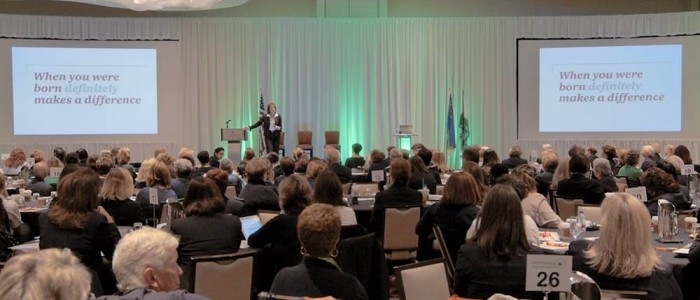Generational Inclusion
“Diversity is being invited to the party; inclusion is being asked to dance.” – Verna Myers
When invited to speak on emotional intelligence, one of my most popular and most requested platforms is to talk about “generational inclusion.” As I meet with my clients and prepare to deliver their program or keynote message, I’m constantly reminded of the need to model “relevancy + generational inclusion,” especially to a vast audience of all four generations.
Inclusion is the action or state of including or of being included within a group or structure. In this case, being included as a member of a generation (birth period). Webster defines “relevant” in several ways – 1. as relating to a subject an appropriate way; 2. having significant and demonstrable bearing on the matter at hand; 3. affording evidence tending to prove or disprove the matter at issue or under discussion ; and 4. having social relevance.
I was intrigued by #4., having social relevance, and went on to discover further that “relevance” is defined as: the ability (as of an information retrieval system) to retrieve material that satisfies the needs of the user.
Understanding and describing this need for “inclusion + relevancy” by this recent example was motivating. A Baby Boomer’s Millennial protégé, upon noticing that she was not dependent on nor did she appear to understand/appreciate his many personal devices and social media tools and habits, requested a feedback session. In the course of using their “fast feedback model,” a conversation ensued about their communication differences. He explained what was “at stake” — that her actions and opinions made her, to some degree ,“irrelevant” to him and to his generation. This observation made her feel excluded as his mentor. This talented, highly educated and sophisticated woman who could experientially and academically run circles around her protégé (and most Millennials) wondered, “How could his truth-telling feedback help her?”
They explored her “exclusion experience” element from an emotionally intelligent and generationally inclusive perspective by using the workbook materials provided and by identifying areas of relevance — those “that satisfies their needs” and helped them inform each other of their generational differences. As an employer of Millennials in healthcare, she knew that the “Millennial” generation has surpassed Baby Boomers as the nation’s largest living generation and that this matter of “generational inclusion” had the capacity to be a lightning rod. Good news is that they are making progress and seeing positive change.
This Baby Boomer and Millennial are communicating in a new, positive and powerful way — generational inclusivity is worth a serious look and the critical issues of “relevance” matter. What’s your reason/story for enhancing and/or flexing “generational inclusion + relevancy” in your life and/or business practice? Visit ritamurray.com or call me to discuss at 405-701-2999.


Comments are closed.